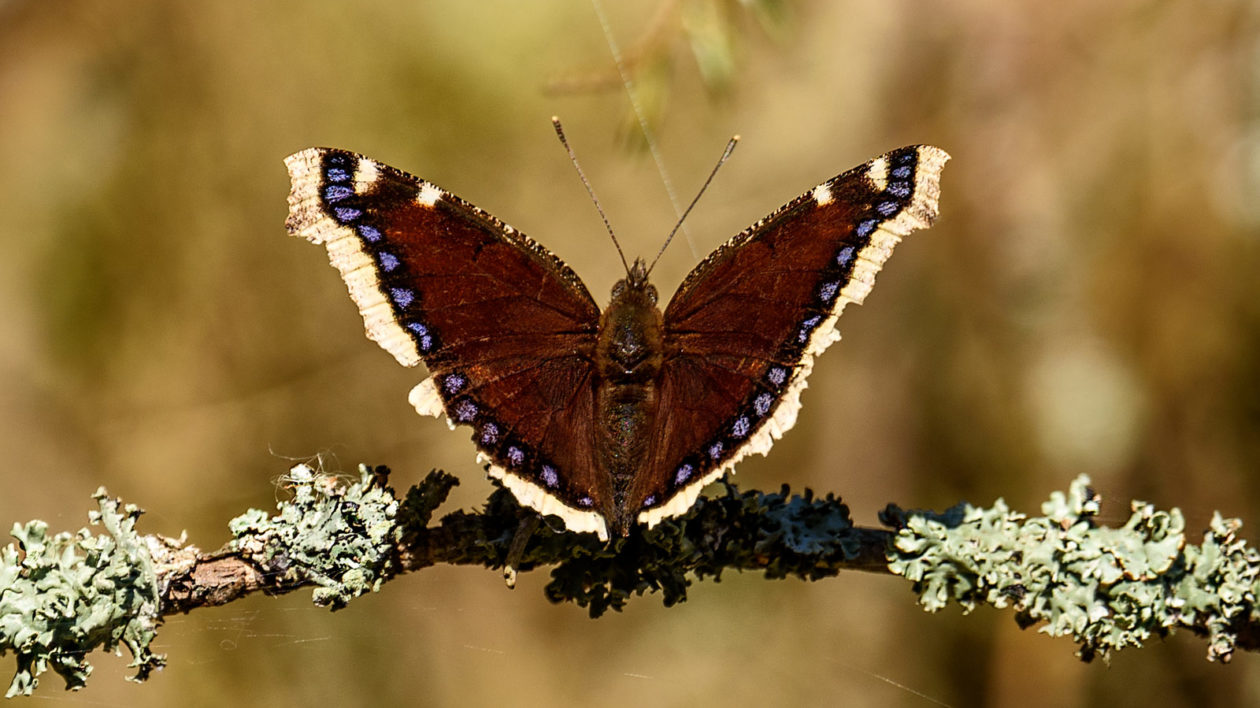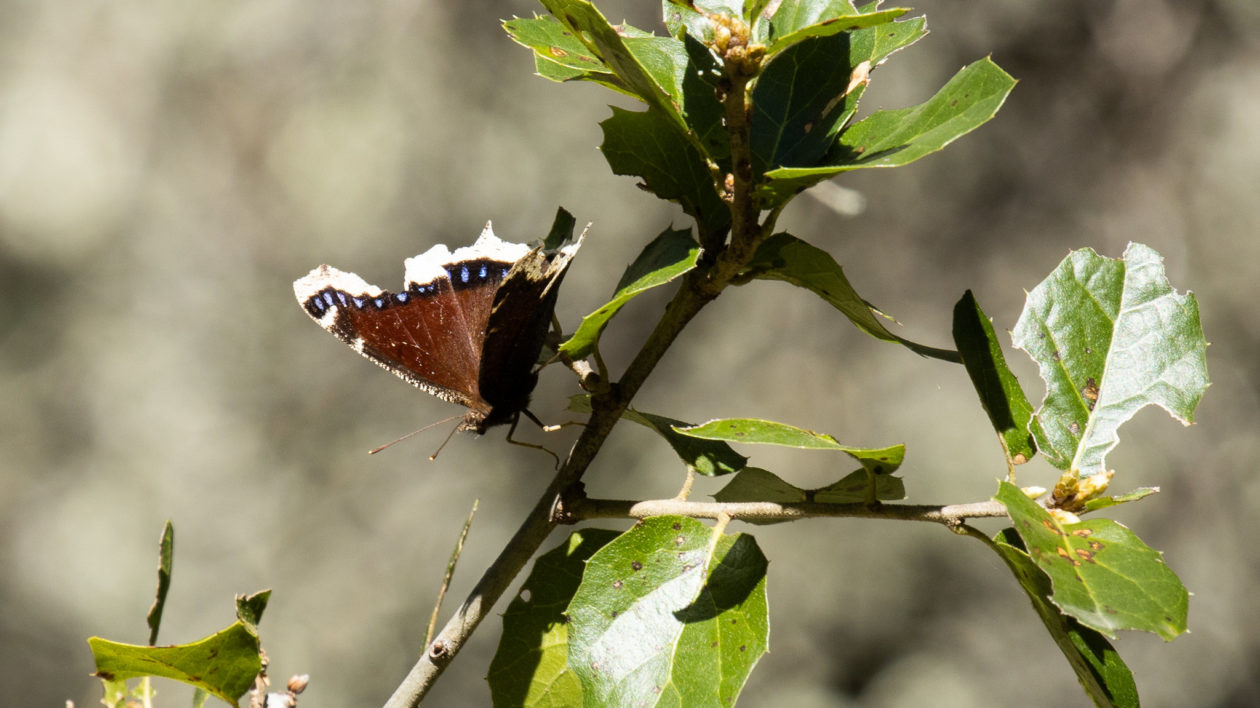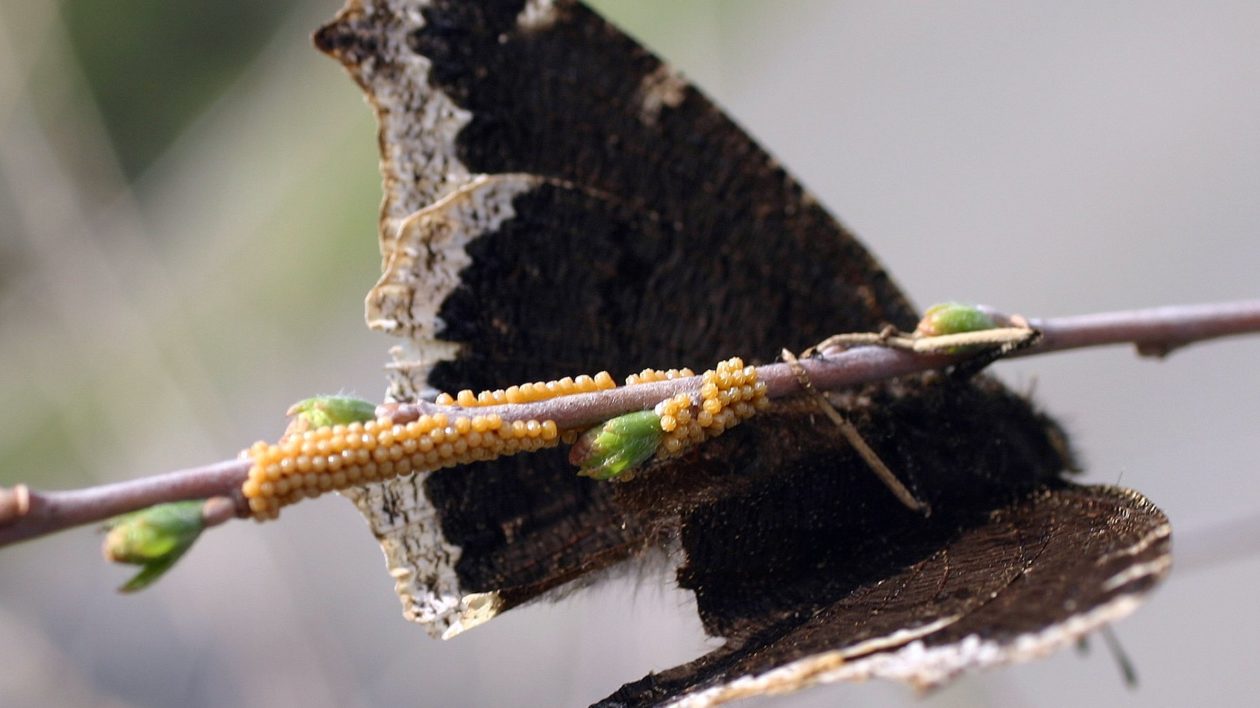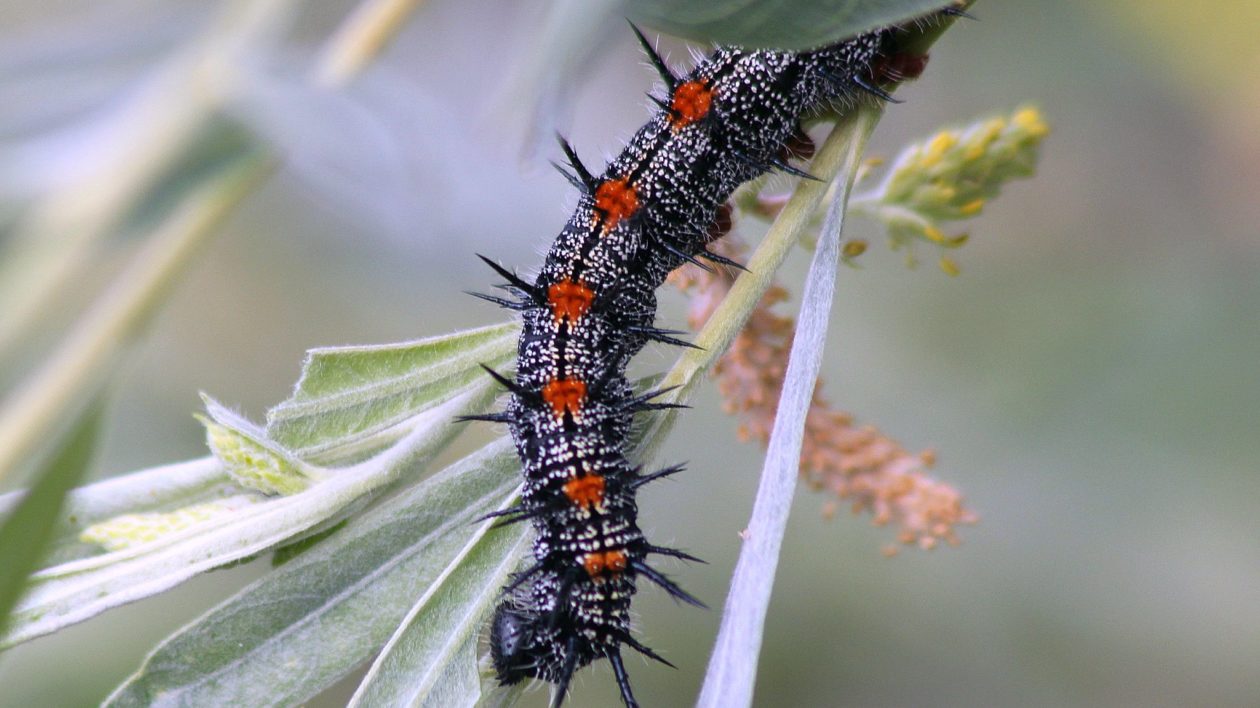Have you seen the mourning cloak butterfly? It may well be flying around your neighborhood right now, a sure sign of spring.
In some places you can find mourning cloak butterflies throughout the year, but after a long winter, the first sighting of one can be the earliest sign of spring. Unlike most butterflies, mourning cloaks overwinter as adults, even in the northern latitudes.
After spending the coldest months in a hibernation-like state, they are usually out by mid-March. Look for them flitting about on warm sunny days, even before the snows have entirely melted off.
Mourning cloaks are one of the most widespread butterfly species. They range across much of the northern hemisphere including North America, Europe, and Asia. It’s a rarity in Britain, where the species is referred to as Camberwell beauty, a reference to the location a pair of individuals were once spotted at.
In 2001 the mourning cloak was designated Montana’s state insect. For Emma Narotzky, an artist currently residing in that state, “Mourning cloaks were one of the first butterflies I could identify as a kid.” The rich brown wings are accented by vibrant blue dots and a bright yellow border along the trailing edge. This pattern has really stuck with her.

Sunny Mournings
Narotzky’s earliest memories of this butterfly are from her childhood years in Wisconsin. “My mom had to explain the difference between morning and mourning,” she recalls. The somber patterned butterfly still brings her great happiness when she finds one.
Narotzky still hasn’t tracked a mourning cloak down this year, but she continues to find inspiration in the species. She has plans to “make an actual cloak or cape that looks like the wings of the butterfly.” The regal pattern will surely catch attention whether she wears her cloak in mourning or as a cape on her next mountain stroll.
Naturalist Cindy Blobaum of central Iowa reminds folks that just because mourning cloaks are out, doesn’t mean you should start the outdoor spring cleaning just yet. “Resist the urge to clean up your gardens too early,” she says. “Go for the no-till look, to benefit overwintering insects and pollinators.”

Adult mourning cloaks winter tucked under a bit of tree bark or in the leaf litter and standing stalks of vegetation. They’ll even overwinter under stucco on buildings.
Mourning cloaks are occasionally seen on the earliest flowers including dandelions. Blobaum also commonly finds them on the “juiciest raccoon and opossum poops.” Apparently, the dried scats don’t offer the salt and amino acid nutrients that the butterflies are after.
Tree sap is another rich source of food for this species. Blobaum’s first sightings of the year are usually when she’s maple sugaring. “A flowing maple tap is sure to draw in the insects,” according to Blobaum. “They do love to flock to sapsucker holes, too.”
The Butterflies and Moths of North America webpage states that oak sap is another favorite. Mourning cloaks are often seen feeding upside down as they lap up the sap.
Narotzky usually spots mourning cloaks trailside while on lower elevation mountain hikes. In her experience, they are often associated with willows. Other preferred species include birches, cottonwoods, elms, and hackberries.

Caterpillar Cloaks
In the springtime, male mourning cloaks take advantage of conspicuous sunny perches as they wait for receptive females for mating. Females then lay eggs in circular patterned clusters along host tree twig branches. After the future of the species has been deposited, the adults die off.
Naturalist Blobaum admits mourning cloak caterpillars can be easy to miss. This is due in part to the fact that after feeding within a communal web, they tend to make a mass exodus from their host plant. If you happen to catch the spectacle at the right time though, it can be impressive.
The caterpillars are dark, nearly black in coloration. Black spines and rich red spots really stand out on this species. A speckling of small white spots adds to the stunningness of the caterpillars.
Older caterpillars are prone to wandering about, so they can sometimes be found on species that aren’t the traditional host plants.

Summer Flights
If you missed out on the early spring flights of mourning cloaks, you’ll have a chance of seeing the next generation later in the summer. Depending on location, June to July is a good bet for seeing a number of adult mourning cloaks back on the landscape.
“You don’t usually have a butterfly that can live for almost an entire year as an adult,” says Blobaum. These fresh summer mourning cloaks will survive to be the breeders next spring.
One way to get close up looks at mourning cloaks is to offer up a fruit feeding station. Along with the other closely related tortoiseshells and commons, brushfoots like the mourning cloak will readily feed on bananas placed in a tray feeder.
It’s another creature for curious naturalists to search for at this time of year.
As Blobaum says, “Seeing mourning cloaks flutter out of the leaf litter is a sure sign of spring, much like the sighting of the first trilliums and hearing the male cardinals belting out their song at sunrise.”




I videotaped my first Mourning Cloak of the 2021 season on March 13th. He was very cooperative and I was able to get very close to it. It may have been recently emerged and not fully “warmed up” yet. I purposely left last years leaves around for this and other insects that need a “winter home”. Thanks for the picture of the eggs and also what the caterpillar looks like. I’ll be looking for them all summer! Here is the link to my video . Feel free to share if you like! Make sure to turn sound on! I do a series on Nature called “Visual Meditations” and this was one in the series. Enjoy!
Mourning Cloak Butterfly 2021 https://youtu.be/8FEQ6CPuTF8. vfoulke01@gmail.com